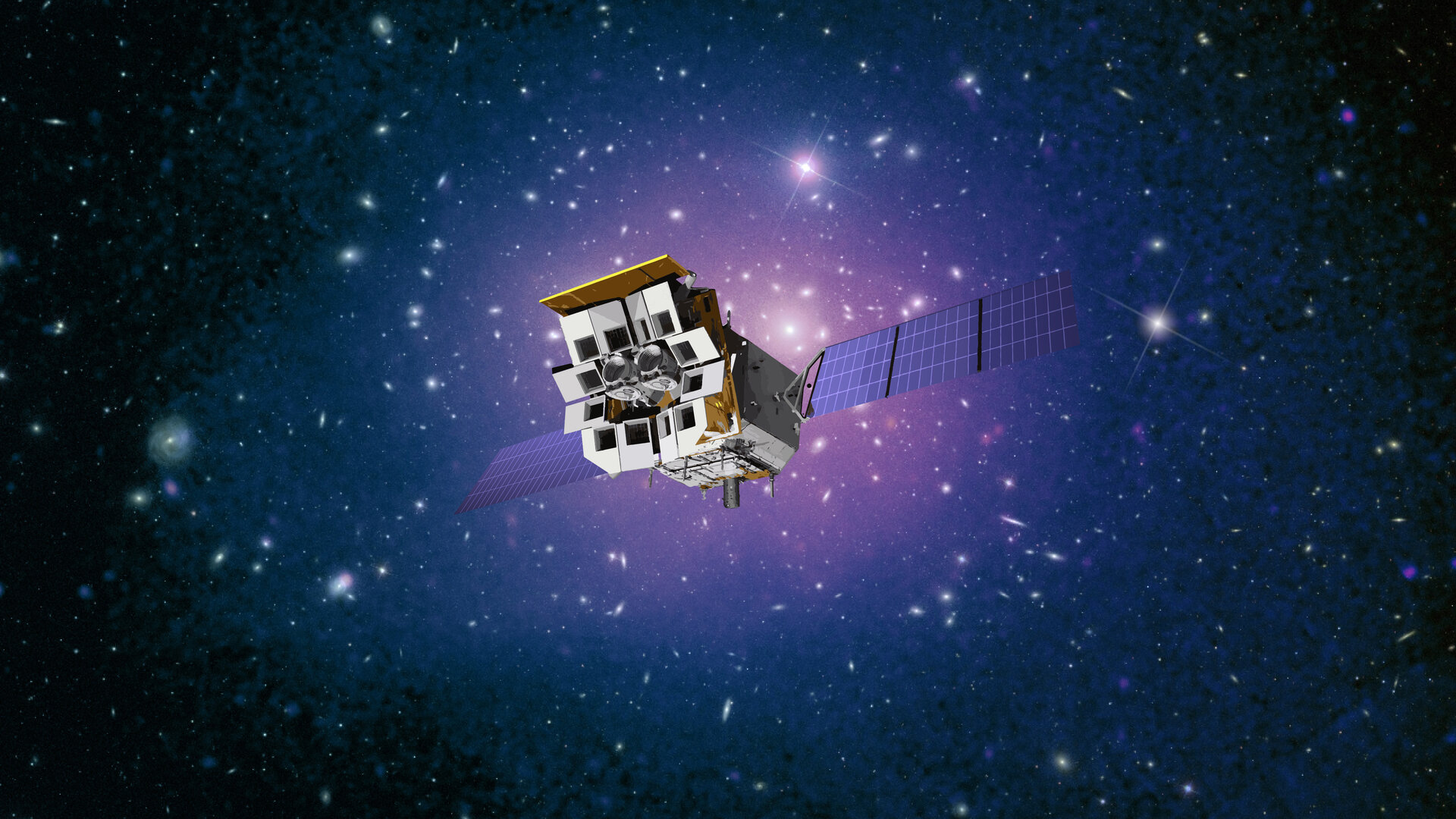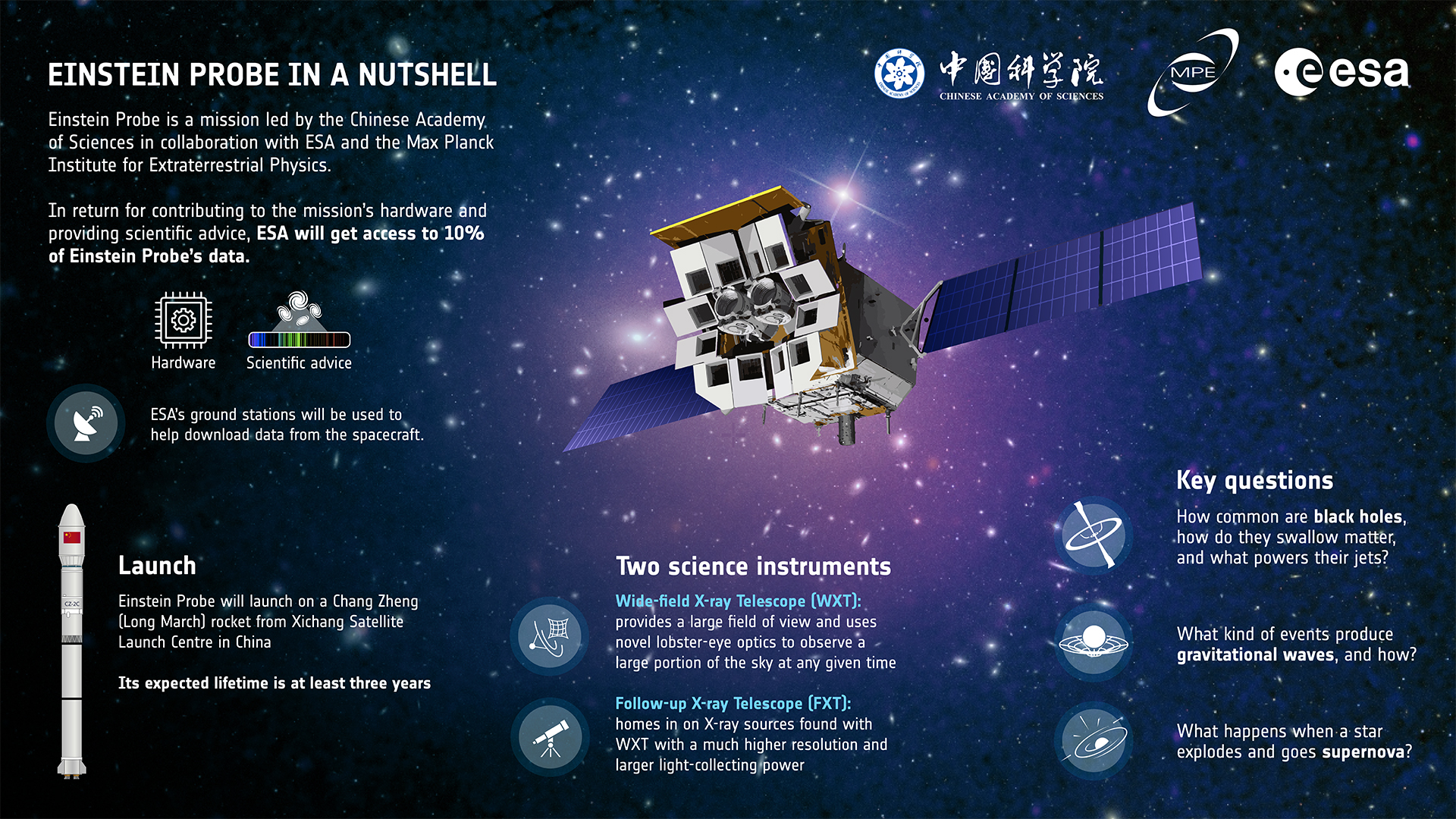Einstein Probe, with unique 'lobster eye,' deploys to unravel the mysteries of black holes, colliding neutron stars and supernovas
The Einstein Probe has left Earth to survey the cosmos for X-ray signals from feeding black holes, colliding neutron stars and exploding stars.

China just launched its Einstein Probe, a unique telescope with a special "lobster eye" camera designed to study the X-rays produced by colliding black holes, stellar corpses and supernovas.
The spacecraft, which blasted off atop a Long March 2C rocket Tuesday (Jan. 9) at 2:03 a.m. EST (0703 GMT, 3:03 p.m. local time) from the Xichang Satellite Launch Center, is a mission by the Chinese Academy of Sciences in collaboration with the European Space Agency (ESA) and the Max Planck Institute for Extraterrestrial Physics. Its mission is to identify and study new sources of high-energy X-ray light. In the process, scientists hope to learn more about the universe's most powerful events and exotic objects.
Related: Universe's oldest X-ray-spitting quasar could reveal how the biggest black holes were born
Among the Einstein Probe's targets will be the matter shredded and devoured by black holes, the collision of ultradense dead stars called neutron stars, and the supernova explosions of massive, dying stars. All of these processes blast out X-rays and generate physics that can't be replicated on Earth.
"The cosmos is our only laboratory to investigate the most energetic processes," Erik Kuulkers, ESA's Einstein Probe project scientist, said in a statement. "Missions like Einstein Probe are essential to advance our understanding of these processes and to learn more about fundamental aspects of high-energy physics."
How will the Einstein Probe investigate the cosmos' most violent events?
The events the Einstein Probe will study are short-lived; they often appear for a moment, then vanish and never repeat in the same location. So, to spot these X-rays, a telescope needs to be very lucky — or it must have an extremely wide view of the universe.
The Einstein Probe has the latter, thanks to its primary instruments. The first, the Wide-field X-ray Telescope (WXT), has an extraordinarily wide view of the sky thanks to its modular design inspired by the lobster eye. These crustaceans' eyes have evolved differently from those of other creatures, perceiving light via reflection rather than refraction.
Get the world’s most fascinating discoveries delivered straight to your inbox.
This gives the lobster a 180-degree field of view. The WXT employs hundreds of thousands of square fibers that channel light onto its detectors, granting the Einstein Probe the unique capability to observe nearly one-tenth of the celestial sphere over Earth in a single glance.
Once the spacecraft spots an interesting or unknown X-ray source, it can then transmit the discovery to astronomers across the globe, who can train their telescopes on it. But that doesn't mean the Einstein Probe must move on to a new target.
The spacecraft's second primary payload is the Follow-up X-ray Telescope, which can zoom in on X-ray sources identified by the WXT and study them in much greater detail.
The new telescope also gets a boost from its position around 370 miles (595 kilometers) above Earth and its orbit of our planet. The Einstein Probe will complete one orbit of Earth in around 96 minutes and see nearly the entire night sky over our planet in just three orbits.
The new probe will also provide data to explain the gravitational waves detected on Earth, which are caused by the mergers of black holes and neutron stars — collisions that also blast out X-rays.
"Thanks to its uniquely wide gaze, we will be able to catch the X-ray light from collisions between neutron stars and find out what is causing some of the gravitational waves we detect on Earth," Kuulkers said.
When massive instruments such as the Laser Interferometer Gravitational-Wave Observatory do detect these ripples in space-time, scientists can't currently identify where in space they came from.
"By promptly spotting the burst of X-rays, we will pinpoint the origin of many gravitational wave events," Kuulkers said.
Robert Lea is a science journalist in the U.K. who specializes in science, space, physics, astronomy, astrophysics, cosmology, quantum mechanics and technology. Rob's articles have been published in Physics World, New Scientist, Astronomy Magazine, All About Space and ZME Science. He also writes about science communication for Elsevier and the European Journal of Physics. Rob holds a bachelor of science degree in physics and astronomy from the U.K.’s Open University




